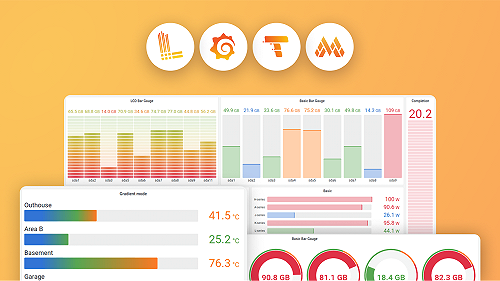OnCall API Reference
Use the following guidelines for the OnCall API in Grafana IRM.
Authentication
You can authenticate with the OnCall API in Grafana IRM using one of two methods:
- Grafana Cloud service account tokens (recommended)
- OnCall API keys (legacy)
Grafana Cloud service account tokens are the preferred method for most use cases. They allow you to assign granular permissions, rotate tokens, and manage access centrally. However, some endpoints require user-specific context and must be accessed using a legacy OnCall API key.
To locate your OnCall API endpoint, navigate to IRM > Settings > Admin & API in Grafana Cloud. For more details, see the IRM settings documentation.
Note
Certain OnCall API endpoints require user context and cannot be accessed with service account tokens. For these endpoints, use a legacy OnCall API key. These exceptions are noted in the relevant endpoint documentation.
Authenticate using a service account token (recommended)
Service account tokens provide secure, flexible access management. To authenticate:
- Add the
Authorizationheader with your service account token. - Add the
X-Grafana-URLheader specifying your Grafana Cloud stack.
curl "https://your-oncall-endpoint/api/..." \
--header "Authorization: <service account token>" \
--header "X-Grafana-URL: https://your-stack.grafana.net"Refer to the Service account tokens documentation for more information.
Authenticate using a legacy OnCall API key
Legacy OnCall API keys are user-specific and may be required for endpoints that record user actions.
curl "https://your-oncall-endpoint/api/..." \
--header "Authorization: <oncall-api-key>"Note
OnCall API tokens are only visible to the user who created them. Other users cannot view or manage tokens they did not create.
Pagination
List endpoints such as List Integrations or List Alert Groups return multiple objects.
The OnCall API returns them in pages. Note that the page size may vary.
To control the size of the page and which page to access use the page and perpage query parameters. For example:
curl "{{API_URL}}/api/v1/alert_groups/?page=5&perpage=10" \
--request GET \
--header "Authorization: meowmeowmeow" \
--header "Content-Type: application/json" \
--header "X-Grafana-URL: https://your-stack.grafana.net"Rate Limits
Rate limits ensure alert group notifications are delivered to your Slack workspace even when some integrations produce a large number of alerts.
Monitoring integrations Rate Limits
Rate limited response HTTP status: 429
API rate limits
You can reduce or increase rate limits depending on platform status.



